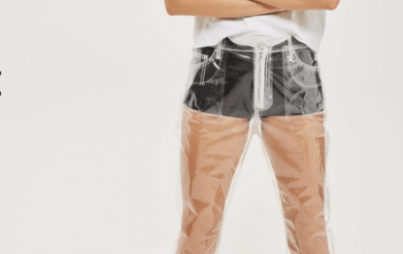
Entranced by frocks displayed at Fashion Week, but confused about what they mean? We may not be able to explain all the avant-garde looks, but a new NYC exhibit provides the larger social context for certain fashion icons.
- Camouflage: This look has its roots in WW I, when French troops first started hand-painting their uniforms to blend in with their natural environments. Since the fashion world embraced the design after its mass-production in WWII, it has often been worn ironically, both by war protesters, and in otherwise feminine clothes to create an edge. It speaks to the power of this design's aesthetic and symbolism that camouflage keeps resurfacing decade after decade.
- Exoticism: The rise of commercial air travel in the 1960s fostered renewed interest in international clothing. Designers started creating brightly-colored, flowy pieces, often incorporating bold prints and beaded detail. To the chagrin of anthropologists, co-opting the fashion of less-affluent peoples became an exotic symbol of status among cosmopolitan jetsetters.
- Branding: Everything was over-the-top in the 1980s (maybe because the 1970s had been such a bummer?), and if you had money, you showed it. Fashion trends included intricate textiles, shoulder pads, bold fabrics, and loud colors. Brand name was key—and was preferably displayed prominently on fashion pieces.
- Fast fashion: Nowadays consumers want it all! Runway styles enter mass-production more quickly than ever before, and various stores specialize in creating versions of high-end fashion at discount rates. Fashions also change more quickly—if the industry is selling the clothes for relatively cheaper than in the past, they want to incentivize consumers to buy new clothes each season.
Who knows what direction the social + economic context will take fashion in the future (granted, it would be folly to leave out the factor of designer creativity). Our vote? Heavy island emphasis—mumus a MUST. (Image: commons.wikimedia.org)
If you like this article, please share it! Your clicks keep us alive!






